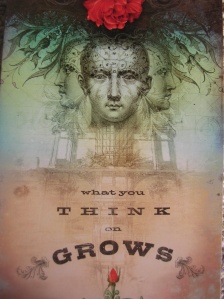At the beginning of every year, a sense of excitement and renewal seems to gather in the air around us. People speak of resolutions and new ways to design their lives. There is a resurgence of confidence that comes of believing we can wipe the slate clean, that we can give legs to new projects and bring them to life.
At the same time, the constant noise of modern life can easily drown out that impulse. The sheer quantity of messages around us creates perpetual mental overload, compounded by the fractured nature of the messages themselves as “sound bites” take precedence over more weighty communication. The mind in these conditions becomes not a place for germination and fruition of new ideas, but a traffic-jammed highway system.
To create an environment for big ideas and real personal development, peaceful focus is necessary. The mental faculty that is engaged in traffic control cannot possibly engage in meaningful integration of new input. First we must EDIT.
A common theme in public discourse at the new year is “Improve yourself,” or “New Year, New You.” Here’s a radical proposition: perhaps the “New You” we are craving is more like the Old You than we might think. The New You just has fewer distractions.
Intention is a powerful tool to facilitate such editing of the chaos around us. An intention serves as your north star and invites forward a particular focus at a particular time. By repeating your intention when you realize you have lost focus, you connect again to your vitality.
An intention is distinct from a goal or resolution. A goal becomes an item on a “to do” list, and if it never gets checked off, we may feel we have failed. An intention, by contrast, invites exploration. There is an inherent acknowledgement in an intention that we are not in control of the outcome – there is room for the mysterious to intervene.
You can set an intention for a certain event – a meeting at work, say, or a yoga class, or a family dinner – or you can set an intention for a specific period of time – a week, one day, or even a whole year.
An intention can take many forms – it could be a statement or phrase, it may be formed as a question, or it may be summed up in one word. For example, consider the influence any of the following intentions might have if you held it in your awareness during a tense board meeting:
- “I intend to be open to differing opinions.”
- “Relax the belly”
- “Who can I admire and acknowledge during this meeting?
- “Quiet Confidence”
As 2013 begins unfolding its new wings around us, it can be a powerful practice to craft an intention for your year. While New Year’s resolutions may bring forward our Pitta tendencies to judge or get rigidly practical, intentions call forth Vata’s creativity and Kapha’s compassion and acceptance of the unexpected.
Play around with different forms of intention. Questions inspire the brain to seek out the answer. Single words are inspiring in their simplicity. You’ll know you’re on to something when you feel excited or like a puzzle piece clicked into place. Write your intention on a sticky note and paste it in your car, on the bathroom mirror, in your datebook. Write it in secret places. When the busy noise of life around you builds to a roar, repeat it in your heart.
Remember, “where your attention goes, prana will follow.” Intentions help us direct our prana towards the vision we want to create. Let the waxing moon energy carry your intentions into expression as we embark on this new year.


